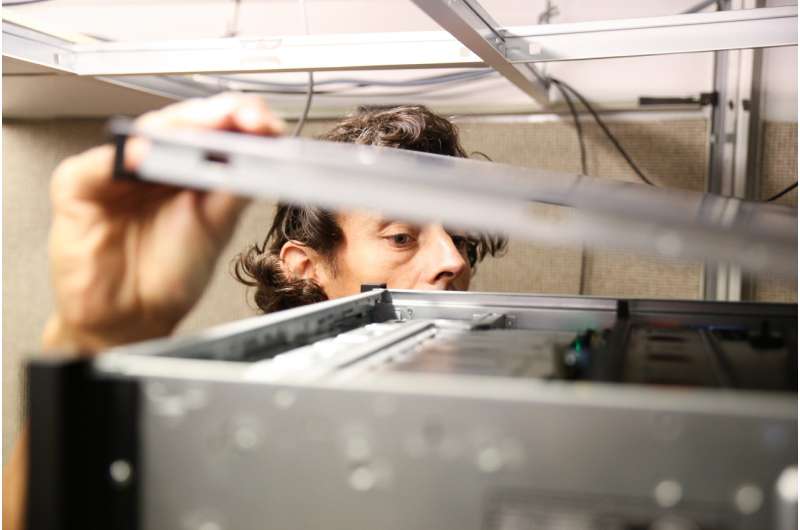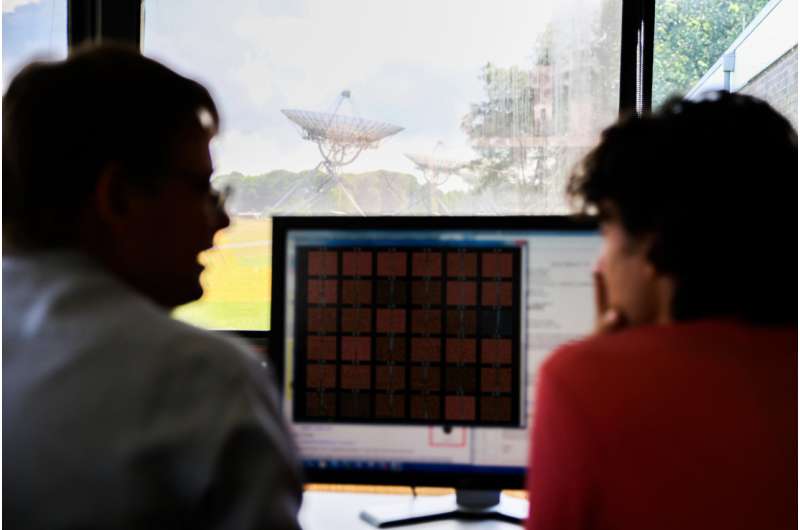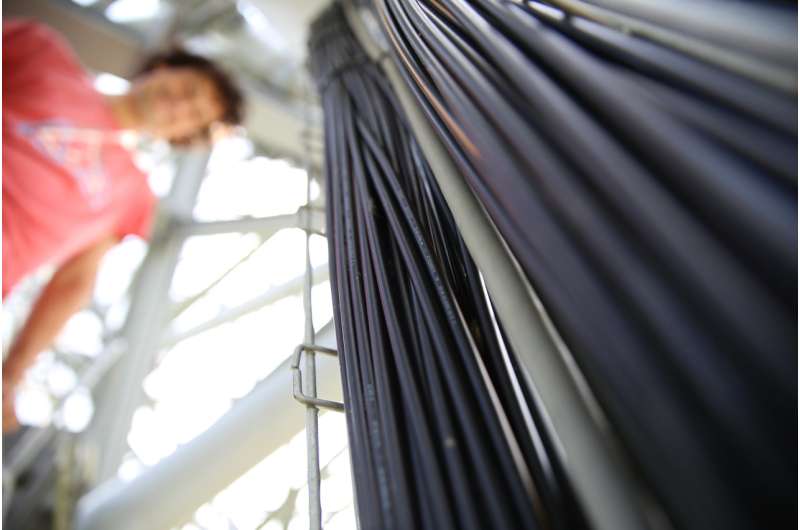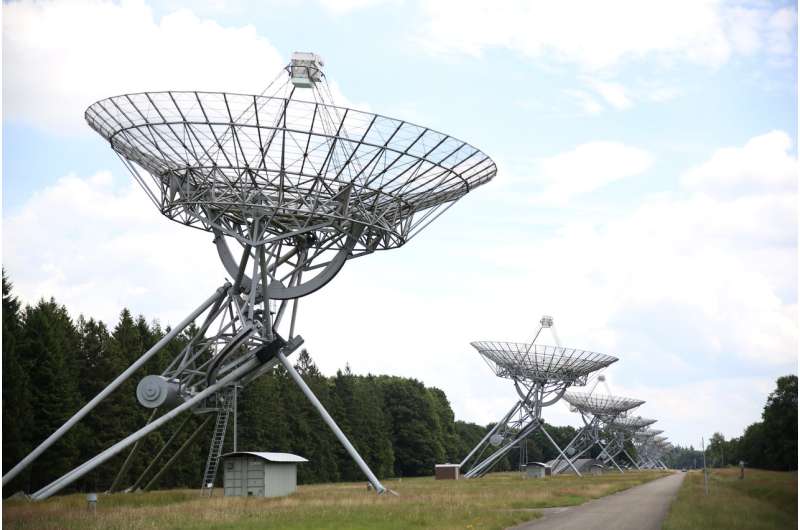Most powerful Dutch supercomputer boosts new radio telescope

Every day, thousands of enormous explosions go off in the sky: so-called Fast Radio Bursts. To better understand the flashes and the gigantic energies behind them, ASTRON—the Netherlands Institute for Radio Astronomy, an NWO institute—recently installed new high-speed cameras on the radio telescope in Westerbork, the Netherlands. These cameras have just received new brains: the most powerful supercomputer in the Netherlands.
Fast Radio Bursts (FRBs) are extremely bright flashes of radio light, that travel billions of light years to reach Earth. Discovered over a decade ago, their origin and nature are still largely a mystery. Because the flashes last only a fraction of a second, they are easy to miss and very difficult to observe. Therefore, only about 25 FRBs have been discovered so far.
That is now going to change with Apertif, the new wide-field cameras for ASTRON's radio telescope in Westerbork, the Netherlands. Apertif has the largest, most sensitive field of view of all radio telescopes in the world. To find FRBs, Apertif needs to continuously make a high-speed movie of the radio sky, at 20.000 frames per second. This requires new, more powerful brains. "To form and process all those images, we need the computing power that only the fastest supercomputers in the world can produce", says Joeri van Leeuwen from ASTRON and the University of Amsterdam. "But we did not have such a computer yet. That's why we designed and built this one ourselves."

The new supercomputer, called ARTS, has a special feature. It is completely powered by image processing chips from the gaming industry. "Gamers use very powerful processors for video tasks: the GPUs", explains Van Leeuwen. "We now use these chips for the first time to process the high-speed images of our telescope." The supercomputer consists of 200 of these GPUs, which process 4 terabits of data per second: more than the entire internet of the Netherlands. With a peak compute capacity of 2 petaflops it is the most powerful GPU supercomputer in the Netherlands.
The supercomputer will be able to teach itself to find FRBs in the thousands of pictures of the telescope. "We have always done this manually," says Van Leeuwen. "But that is a lot of work, and also error-prone. As it detects more flashes, the supercomputer will learn to distinguish the flashes better and better. We hope to discover one FRB per week. Our system is unique in the world in that it can then also immediately determine the precise location."

With the supercomputer Van Leeuwen hopes to unravel the mystery surrounding the Fast Radio Bursts. "We know that they come from other galaxies, but we cannot pinpoint the exact location. It is also unknown whether all FRBs are bright bursts from neutron stars, exploding stars, or black holes that send out flashes." Astronomer Samayra Straal from the University of Amsterdam is also eager for the output of the new machine. "Some FRBs repeat. With the new technology, we discover the flash 'live', and can immediately freeze the telescope motion to stare in that direction for more flashes. We think that can help us understand what causes them. "

Provided by Netherlands Research School for Astronomy





















